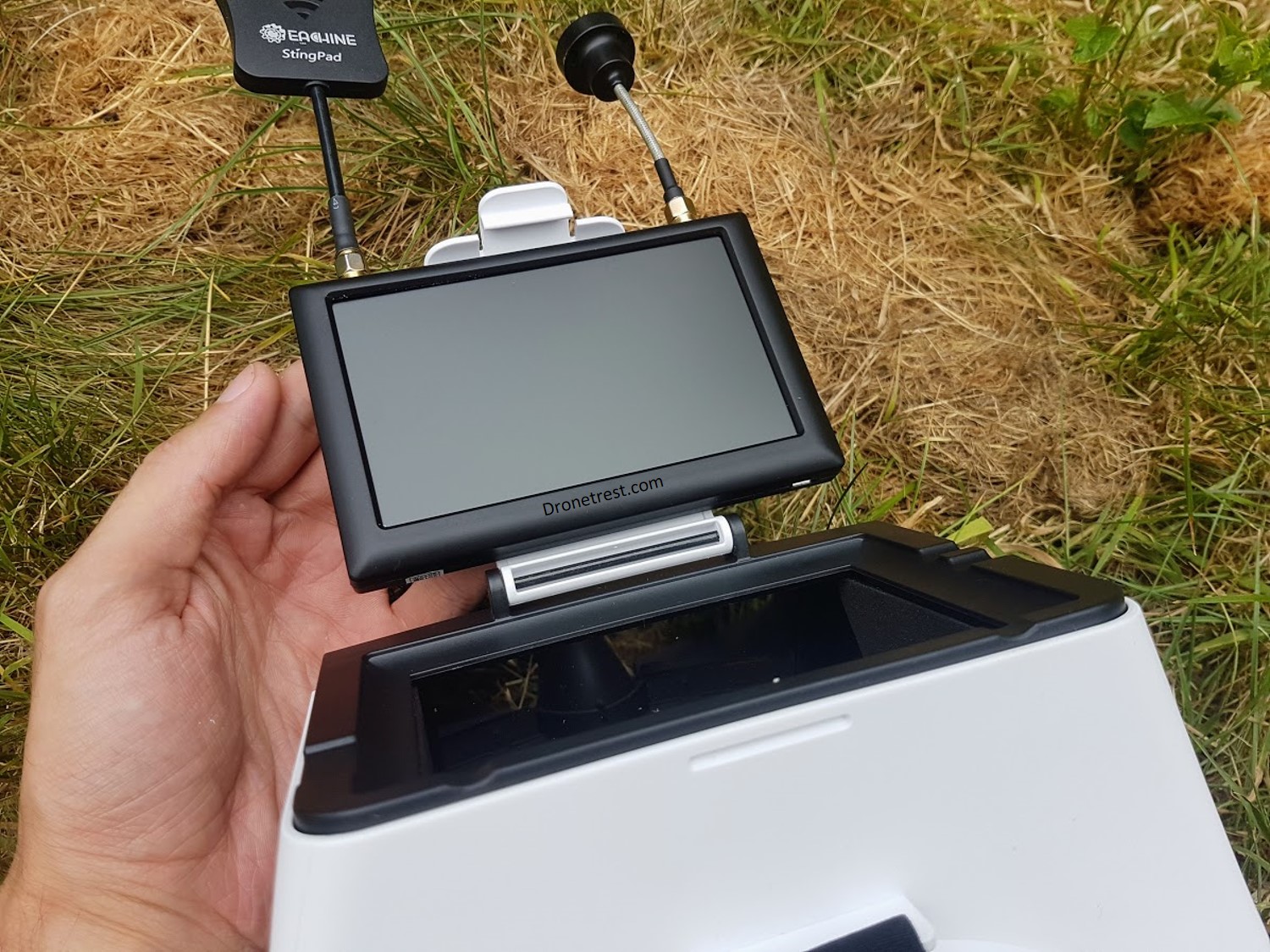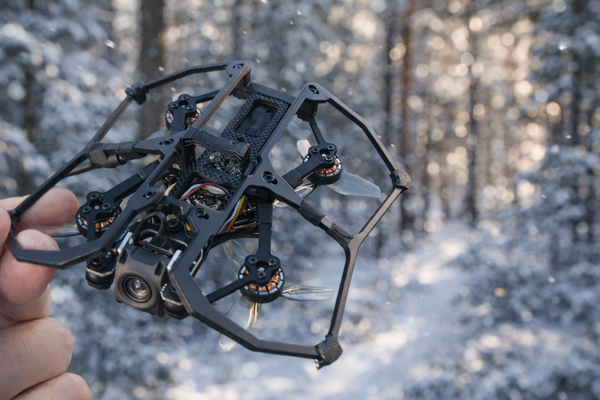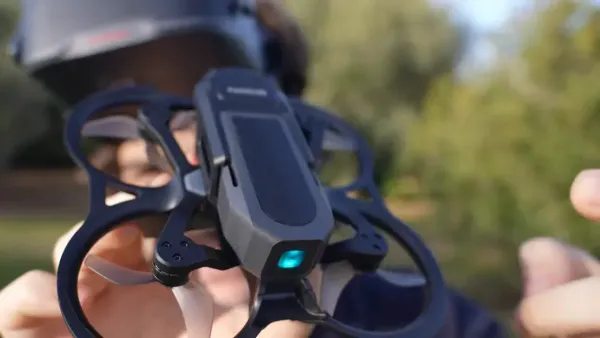If you are like me and wear glasses, it is a bit of a pain when it comes to FPV goggles. You usually need to get diopter lens inserts for the FPV goggles to see them clearly, but then when you take off your FPV goggles you need to fumble around for your glasses before you can see again, not ideal. The simple solution is to wear contact lenses, but this is not practical for everyone. So the last solution is to try to find a set of oversized box goggles and uncomfortably wear your glasses inside them. At least this was the case until the FXT Viper goggles arrived, designed to be worn with glasses. In this article, we will be looking at these new goggles to see if they are any good.
At A Glance
The Good
- Very comfortable to wear with and without glasses. Arguably one of the most comfortable I have worn.
- Excellent range and reception with the built in Diversity receivers.
- Easily converts between FPV goggles and monitor, the screen itself is a stand alone FPV monitor.
- Great value for money
The Bad
- While still acceptable, the LCD screen is not the best around.
- Stock antennas are standard linear antennas, you will need to replace them with proper circular polarised ones.
- Power button/ OSD joystick are exposed making it easy to accidentally turn the goggles on/off or change settings when you put the goggles down.
Why Should You Get The FXT Viper Goggles?
If you wear glasses you should definitely consider the Viper goggles, they are the first goggles I have used that are actually comfortable to wear with your glasses on. The rubber face guard does a great job at blocking the light, and the fancy mirror refraction system makes the FPV screen massive while minimising eye strain. Apart from the novel feature of being suitable for glasses wearers, the rest of the goggles stand up to the competition offering a great picture, excellent reception and packs all the features you expect from a set of goggles like DVR, and battery voltage monitoring. The ability to easily convert the goggles to a standalone monitor is another great feature if you are flying with friends. Not only are these goggles something new in this hobby, they are also sold at an entirely affordable price. The worst thing about these goggles is that they are a lot bigger than the fatshark style goggles, but then again you cant wear your glasses while flying with a pair of fatsharks.
Where To Buy

Detailed Review
We will now go into some more details about the goggles and what they are like to use.
The Screen
The novel feature of the Viper goggles is that they are essentially a fancy enclosure that you clip a regular FPV monitor into. And that is what makes the goggles very easy to convert between goggles and monitor mode in a matter of seconds. All the electronics are in the monitor itself, while the goggles part is just a bunch of plastic, foam, and mirrors. But more than this having this modular design means that FXT (or a third party) can release new, better screens in the future that you can just clip in.

As far as FPV monitors go, the Viper goggles are fairly average in terms of resolution at 800×480 pixels. But this is quickly forgiven when you consider the overall price of the unit. Latency is excellent, and the built-in menu system is particularly easy to navigate thanks to the 4 way joystick on the back of the screen. The monitor has a built-in DVR, along with an HDMI input allowing you to use these goggles to practice on a simulator. You even get some built-in speakers if that is your thing. One slight issue I did notice with the DVR is that it sometimes crops the bottom of the screen (when you use 4:3 cameras). Hopefully, this is something FXT can fix with a firmware update.
In order to reduce eye strain and improve immersion, the goggles use a fancy refraction system (like a periscope) to increase the distance between your eyes and the goggles using mirrors and lenses. This also has the added bonus of keeping the centre of gravity closer to your head. This provides a massive field of view (something that some people don’t like). But overall this system works great, providing a great looking image.

Powering your Goggles
You don’t get any batteries with the Viper goggles, however, they support a massive 7-28V input. The included XT60 connector lets you hook up a spare lipo battery you have lying around to power the goggles. There is a battery holder at the back of the head strap to help keep the goggles balanced on your head. You also get a fatshark style connector if you already have some of those batteries lying around. So overall they are extremely easy to power.

Ergonomics
As mentioned at the start of this review, one of the unique selling points of these goggles is the fact that they can be used with glasses. I am happy to say that not only do these goggles live up to that, but I could almost go as far as saying these are one of the most comfortable FPV goggles I have ever used. FXT use some very nice foam around the headband that has the perfect ratio between hardness and softness. The goggles are a bit strange when you first put them on as you wear them higher than other box goggles, but after the three-point head strap is adjusted they can be worn for hours.

The soft rubber eye guards wrap around your face and if you wear glasses, they wrap around those without any issues. This is the secret FXT used on the design, since the weight of the goggles sit on your forehead, the soft rubber area around the eyes do not take any weight so it wraps neatly around your face blocking most of the light. Although some light does get through, the periscope design and bright screen mitigate any distracting light glare.
Range and Reception
The stock antennas are the biggest let down for me on the Viper goggles. In the box, you get some linear rubber antennas. They work great close range, but as soon as you go over 150m away you start to notice a lot of signal breakup. Since the goggles have a true diversity receiver this is a real shame as it would have been nice to see them include an omnidirectional antenna (like a cheap pagoda 2), and a directional patch antenna for further out. This is something all of the Eachine box goggles include out of the box like the popular EV800D. This would of not cost a lot extra so it’s a real shame, but also not a big deal to order some with the goggles too.

With decent antennas the reception of these goggles is excellent thanks to the two diversity receivers inside the screen. You may think from the image above that the Viper only has a single receiver, but the second one is at the back of the PCB.
Nowadays the latest craze is to use external receive modules with fancy firmware running on them, but compared to a Pro58 with PirX firmware and a True-D module, the Viper receivers held up just as well in terms of reception. So nothing to be concerned about here. Also since the monitor itself is modular, if at the technology advances I would expect FXT to release firmware updates, and also possibly a new monitor module for the Vipers too.

Bottom Line
Whether or not you wear glasses, the FXT Viper goggles are definitely something you should consider. They pack a bunch of features, work great and they are one of the most comfortable FPV headsets to use. They are a little on the larger side of box goggles, but the comfort you gain from this bigger size is worth it. You also get a nice carry case to keep them protected as you travel to and from your favourite flying location. But if you wear glasses and want to be able to keep them on when flying FPV, get yourself a set of Viper goggles!
Thanks for reading and I hope this review was helpful to you. If you have any questions or share any comments just ask them on our forums. If you do decide to buy a set please consider using one of the links in the where to buy section as we receive a small kickback from the retailers to help support this blog and produce more articles.








